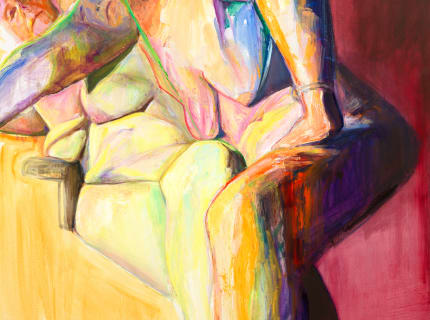This interview has been excerpted from the recent collection New Waves: Contemporary Art and the Issues Shaping Its Tomorrow (September 2021, Skira Publishers), in which art historian Marta Gnyp interviews some of the world’s leading curators, artists, and collectors.
How did you come to abstraction?
At Cooper Union. Some of the instructors where deeply involved in the Ab-Ex experiment at that point. My whole education at Cooper Union was very much involved in the whole philosophy of Abstract Expressionism, of the gestural art, the expressivity of it and so on.
With the Ab-Ex American specialization you became successful in Spain.
True. I showed at the best gallery there in Madrid. I have traveled to South America with a big show of 35 paintings to the Museum of Plastic Arts in Montevideo in Uruguay, from there it went to the Bonino gallery in Buenos Aires, and I was also scheduled to do something in Brazil, but I opted out of that because I was advised that it would be difficult to get my work back out.
You had a career as a woman artist.
Yes, I was a novelty. Being an American woman making art was a sheer novelty. It gave me an identity immediately. I didn’t get lost in the crowd, so to speak. It meant that I had visibility and respect, but I wasn’t part of their network system. I was friends with Spanish artists. A lot of them came by when I was leaving to give me a party, so it was a good experience all around for me, but I was always an outsider.
...
Read full interview at news.artnet.com.

